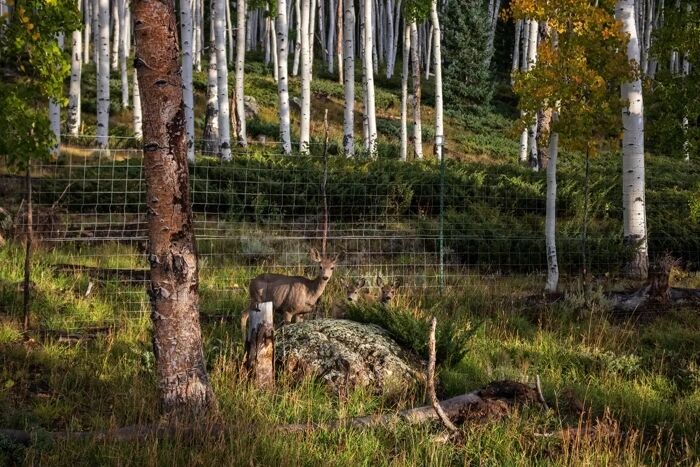The largest organism on Earth is in mortal danger: what is killing it (photo)

The Earth has existed for more than 4.5 billion years, and during this time it has become home to many living things. Some of them live in the oceans, others on land.
But which organism is the largest on the planet? The answer is Pando, according to Science Alert.
In the Wasatch Mountains in the western United States, on the slopes near a spring water lake, there is a huge living organism weighing about 6,000 tons. This is Pando, a colony of quaking aspen clones that supports an entire ecosystem that plants and animals have relied on for about 14,000 years.
Although the largest organism on the planet looks like an ordinary forest of individual trees with bright white bark and small leaves, Pando is actually 47,000 stems that are genetic clones and grow from a single root system.

Aspens often form clone colonies in different regions, but Pando stands out for its gigantic scale. Although this organism has been around for about 14,000 years, individual trunks only live for about 130 years. However, its longevity and isolation ensure that it supports an ecosystem that includes 68 species of plants, as well as a variety of animals that have evolved and found shelter under its crown.
This ecosystem depends on the health and stability of the aspen trees. Although the Pando is protected by the US National Forest Service and is not threatened by logging, it is endangered due to other factors.
Elk and deer
According to Newcastle University researcher and biologist Elton Walton, the main problem for Pando is overgrazing by elk and deer. Previously, their population was controlled by wolves and pumas, but over time, these predators disappeared, which led to a significant increase in the number of these animals.
An additional factor that contributes to the growth of deer and elk is the ban on hunting in this forest, where animals feel protected in its shade. When old trees die or fall, light penetrates to the ground, stimulating the growth of new aspen clones. However, animals eat the tops of the young stems, which leads to their death. As a result, there is almost no regeneration in large areas of Pando.

Disease and climate change
Another serious threat to the Pando is various diseases. Currently, this giant organism is affected by at least three major diseases:
- sooty bark cancer
- leaf spot;
- conk fungal infection.
These diseases have existed in aspen stands for thousands of years, but researchers still cannot accurately predict their long-term effects, especially since there is little or no new growth of Pando in many areas.
As Walton notes, climate change is no less dangerous. Pando appeared after the end of the last ice age and existed in stable climatic conditions. Now, rising global temperatures are threatening its size, lifespan, and the entire ecosystem it supports.
If you want to get the latest news about the war and events in Ukraine, subscribe to our Telegram channel!
